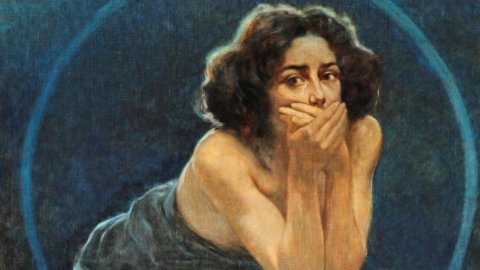Forlì, San Domenico Museums
From 1 February to 15 June 2014
For many the Liberty it is simply a set of floral-style decorations which, at the beginning of the last century, embellished the facades of houses and furniture, objects and, of course, paintings and sculptures. That it was this but also much, much more, will be highlighted by the great exhibition that there Cassa dei Risparmi Foundation of Forlì is programming ai San Domenico Museums starting February XNUMX next year.
Exhibitions on Liberty, and on the very first glimpse of the twentieth century, in Italy there have been many. But objectively none of the level and importance, as well as grandeur, of this one.
The goal of those who are working on it (the Scientific Committee is chaired by Antonio Paolucci, the curatorship of the exhibition is by Maria Flora Giubilei, Fernando Mazzocca, Alessandra Tiddia, the general management by Gianfranco Brunelli) is decidedly ambitious: to offer for the first time to the Italian and international public not just any exhibition but the "great exhibition" on Liberty. Investigating it not only broadly but without restriction of schemes: from the search for distant models, in the Renaissance and Botticelli in the first place, but also by inserting Liberty in the great European movements of the moment and in particular the Viennese Secession.
To allow an exhibition of such breadth and beauty, in addition to the ability of the client and the curators, contributes the breadth of the spaces of the San Domenico. Here one can easily unravel the story of what Liberty meant in painting and sculpture, in the decorative arts, from stained glass windows to wrought iron, to furniture, decorative objects, fabrics and jewels. By highlighting certain themes and some formal solutions, it will be possible to draw a common line between the paintings of Previati, Nomellini, Baccarini, Kienerk, Grubicy de Dragon, Segantini, Pellizza da Volpedo, Longoni, Sartorio, De Carolis, Laurenti, Marussig, Zecchin, Chini , Casorati, Balla, Bucci, Boccioni, Dudreville, Innocenti, Bocchi, Viani and the sculptures of Bistolfi, Ximenes, Trentacoste, Canonica, Rubino, Andreotti, Wildt, Martini, the stained glass windows and wrought iron by Mazzucotelli and Bellotto, the ceramics of Galileo Chini, the manifestos of Dudovich, Terzi, Hohenstein, underlining, through a special graphic apparatus, the relationship with literature, between D'Annunzio, Pascoli and Gozzano.
But also with the music of Puccini, Mascagni and Ponchielli. It will therefore be possible to underline the many meeting points, as in the recurring metamorphosis between the human figure, the animal and plant worlds, between Liberty and Symbolism. European comparisons cannot ignore authors such as Klimt, Adler, Moser, Tiffany, Klinger, Boecklin, Van Stuck, Morris. All present in the exhibition with carefully selected works.
Thus the importance that Liberty has had in Forlì and Emilia-Romagna is highlighted in the exhibition but from it it projects outwards, "onto the field". The exhibition is in fact the starting point for a fascinating itinerary which is not limited to Forlì and Faenza, but extends to the entire region.
Of particular importance is the collaboration with major national museums, including the Gallery of Modern Art in Genoa, the Gallery of Modern Art in Milan, the Civic Gallery of Modern and Contemporary Art in Turin, the Uffizi Gallery in Florence, the National Gallery of Modern and Contemporary Art in Rome, the Wolfsoniana-Regional Foundation for Culture and Entertainment in Genoa, the Mart-Museum of Modern and Contemporary Art in Trento and Rovereto, the Fondazione Musei Civici in Venice.





